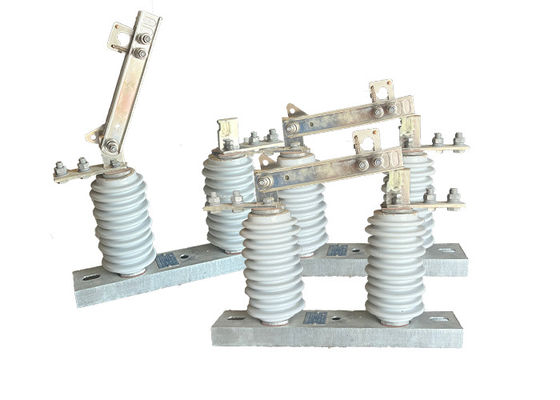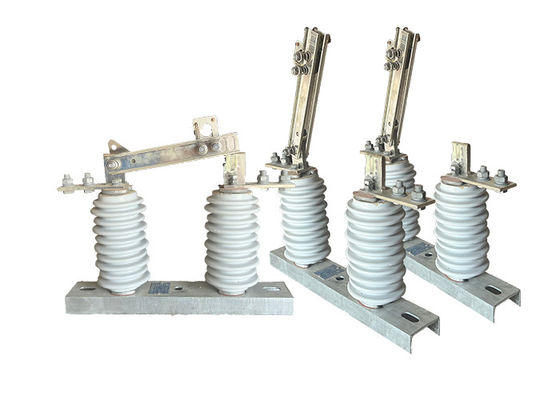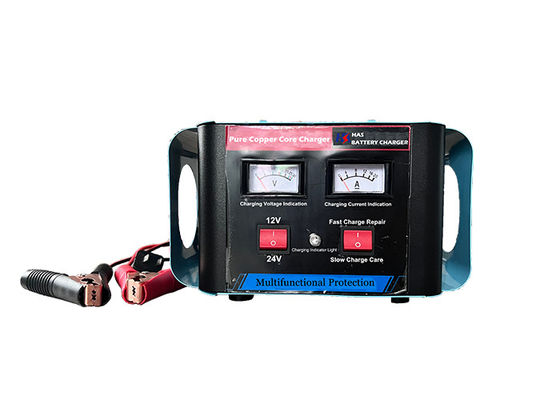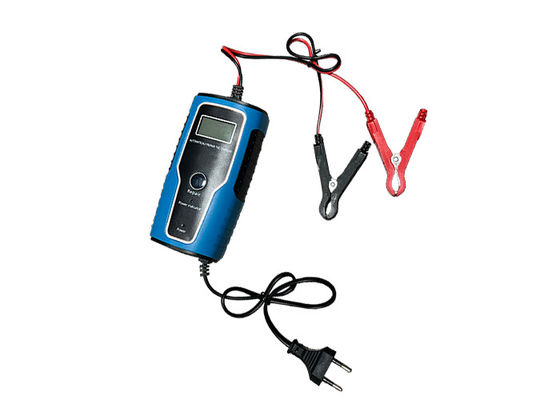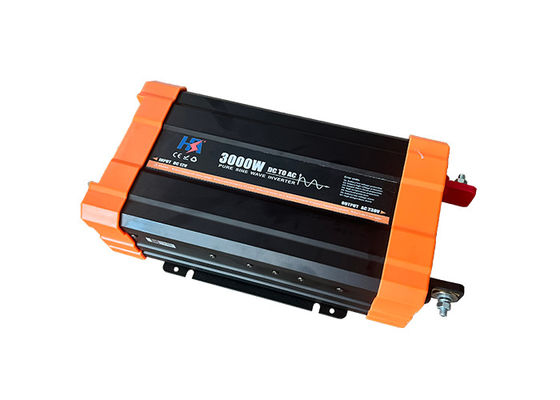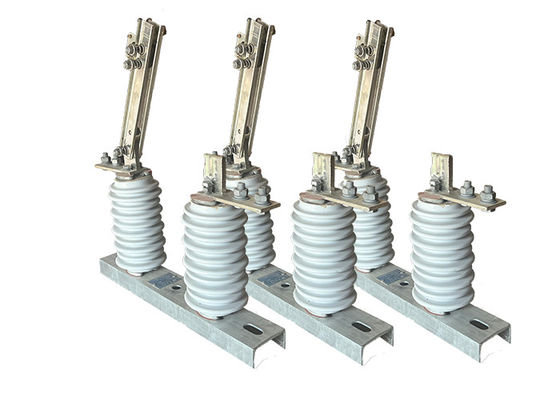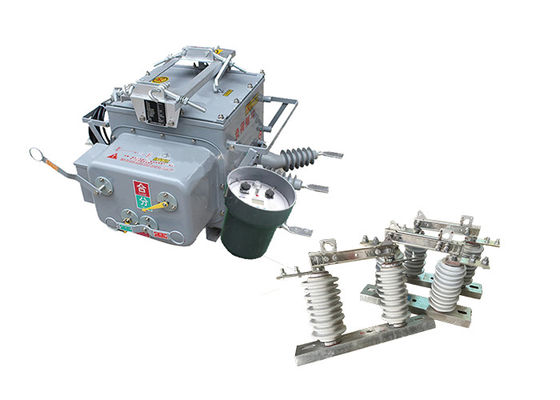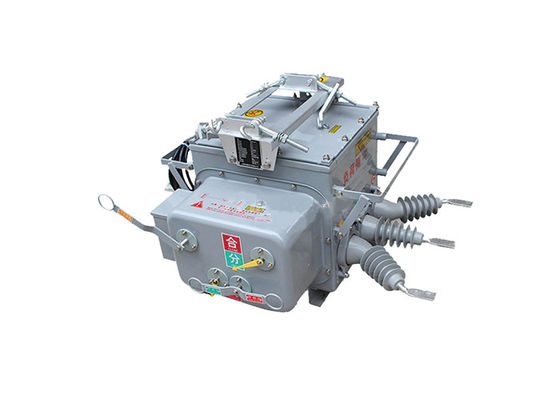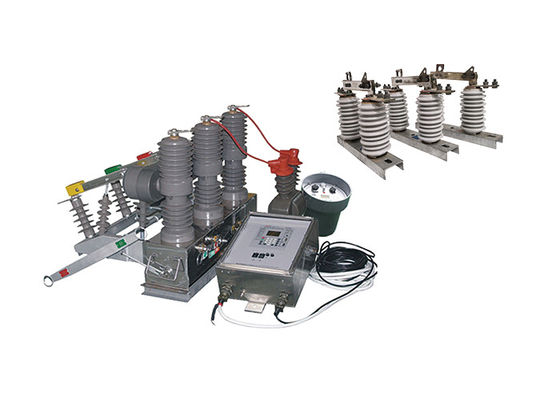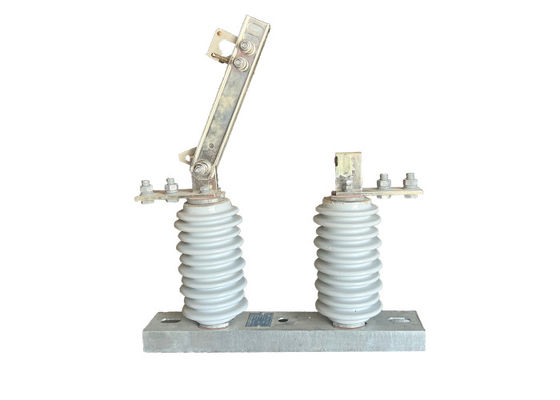Outdoor High Voltage Electrical Isolator Hookstick Operated Disconnect Switch For Power Substation/Distribution System
Product Description:
High voltage electrical isolator is a type of electrical switch used in high voltage power systems to isolate sections of the network for maintenance or safety purposes. The switch is typically mounted on a pole or other support structure and is used to disconnect an overhead power line from the rest of the system.
High voltage electrical isolators are designed to handle high voltages and currents and are often installed in outdoor locations. They consist of a set of stationary and movable contacts that are separated by an air gap. When the switch is in the closed position, the contacts are in contact with each other, allowing current to flow through the circuit. When the switch is opened, the contacts are separated, interrupting the flow of current through the circuit and isolating it from the rest of the system.
High voltage electrical isolators are an important component of power system safety and reliability and are designed to operate in a variety of environmental conditions. They are often subject to rigorous testing and certification requirements to ensure that they meet industry standards for performance and safety.
High voltage electrical isolators are commonly used in high voltage transmission and distribution systems to isolate sections of the network for maintenance or repair work. They are also used as a safety device to protect workers from electrical hazards, such as accidental contact with live parts of the system.
Application:
1.Maintenance and Repair: The disconnector switch is used to isolate a section of the power line for maintenance or repair purposes. This allows maintenance personnel to work safely without risking electrocution.
2.Load Shedding: In the event of a power overload, the disconnector switch can be used to shed the load and prevent damage to the power line or equipment.
3.Fault Isolation: The disconnector switch can be used to isolate a section of the power line in the event of a fault, such as a short circuit or ground fault. This prevents the fault from spreading to other parts of the network and causing further damage.
4.Switching Operations: The disconnector switch is used for switching operations, such as connecting or disconnecting power sources or rerouting power to different parts of the network.
5.Protection: The disconnector switch is often used in conjunction with other protective devices, such as circuit breakers and fuses, to protect the power line and equipment from damage.
6.Renewable Energy: With the increasing use of renewable energy sources, such as wind and solar, disconnector switches are used to connect and disconnect these sources from the power grid.
Feature:
Portable: The High voltage electrical isolator is designed to be portable and can be easily transported to the site where it is needed.
High Voltage Rating: These switches are designed to handle high voltage levels, typically ranging from a few kilovolts to several hundred kilovolts.
Isolation: The switch is used to isolate a section of the power system for maintenance or repair purposes.
Visual Indicators: The Loadbuster has visual indicators that show whether the switch is open or closed, making it easier for operators to know the status of the circuit.
Versatility: The High voltage electrical isolator can be used for a wide range of applications, including switching and isolating circuits, as well as for grounding and de-energizing equipment.
Safety Features: The Loadbuster is designed with safety features to protect operators from electrical hazards, such as insulating materials that prevent accidental contact with live parts.
Easy to Use: The High voltage electrical isolator is designed to be easy to use and requires minimal training to operate.
Interchangeable Blades: The High voltage electrical isolator has interchangeable blades that can be easily replaced, allowing for greater flexibility and versatility.
Operation:
1.When the HV electrical isolator is in the closed position, the contacts of the isolator are in contact with each other, allowing current to flow through the circuit. Thet HV electrical isolator is closed by manually or remotely operating the isolator, depending on the type of the HV electrical isolator.
2.To isolate a section of the power system, the HV electrical isolator must be opened. This is typically done by manually or remotely operating the isolator to separate the contacts and interrupt the flow of current through the circuit.
3.Once the HV electrical isolator is opened, the section of the power system that is connected to the isolator is isolated from the rest of the system. This allows maintenance or repair work to be performed safely on the isolated circuit.
4. When the maintenance or repair work is complete, the HV electrical isolator can be closed to restore power to the isolated circuit. This is done by manually or remotely operating the isolator to connect the contacts and restore the flow of current through the circuit.
Condition:
1.The altitude does not exceed 1000m
2.The ambient air temperature: Maximum+ 40'C ;Minimum:General Area -30'C, Paramos -40 C;
3.The wind pressure does not exceed 700Pa.(corresponding to 34m/s wind speed);
4.The earthquake intensity does not exceed 8 degrees;
5.The working situation is without frequent violent vibration;
6.The installation site of ordinary type isolator should be kept away form gas, smoke chemical deposition, salt-spray fog, dust
and other explosive and corrosive maters that affect seriously insulation and conduction capability of the isolator
7.Pollution-proof type isolator is applies to severe filthy conduction area, however, it shouldn't be any explosive matters and matters causing fire
Technical Parameters:
| Serial No. |
Parameter |
Unit |
Data |
| 1 |
Rated Voltage |
kV |
12 |
| 2 |
Rated Current |
Model No. |
(H)GW9-12(W)/630-20 |
A |
630 |
| (H)GW9-12(W)/1000-20 |
1000 |
| (H)GW9-12(W)/1250-31.5 |
1250 |
| 3 |
4s Short-time withstanding current |
Model No. |
(H)GW9-12(W)/630-20 |
kA |
50 |
| (H)GW9-12(W)/1000-20 |
50 |
| (H)GW9-12(W)/1250-31.5 |
80 |
| 4 |
Rated Insulation Level |
Lightning surge withstand voltage(peak) |
Polar-to-Earth
(Positive & Negative) |
kV |
75 |
Interfracture
(Positive & Negative) |
85 |
Industrial frequency withstand voltage
(1 min)
(Effective value) |
Dry Test/Wet Test |
Polar-to-Earth |
42(Dry)
34(Wet) |
| Interfracture |
48(Dry) |
| 48(Dry) |
48(Dry)
40(Wet) |
| 5 |
Main Circuit Resistance |
μ Ω |
630 |
| 1000 |
| 1250 |
| 6 |
Mechanical Life Time |
times |
50 |
| 50 |
80
|









 Your message must be between 20-3,000 characters!
Your message must be between 20-3,000 characters! Please check your E-mail!
Please check your E-mail!  Your message must be between 20-3,000 characters!
Your message must be between 20-3,000 characters! Please check your E-mail!
Please check your E-mail! 
